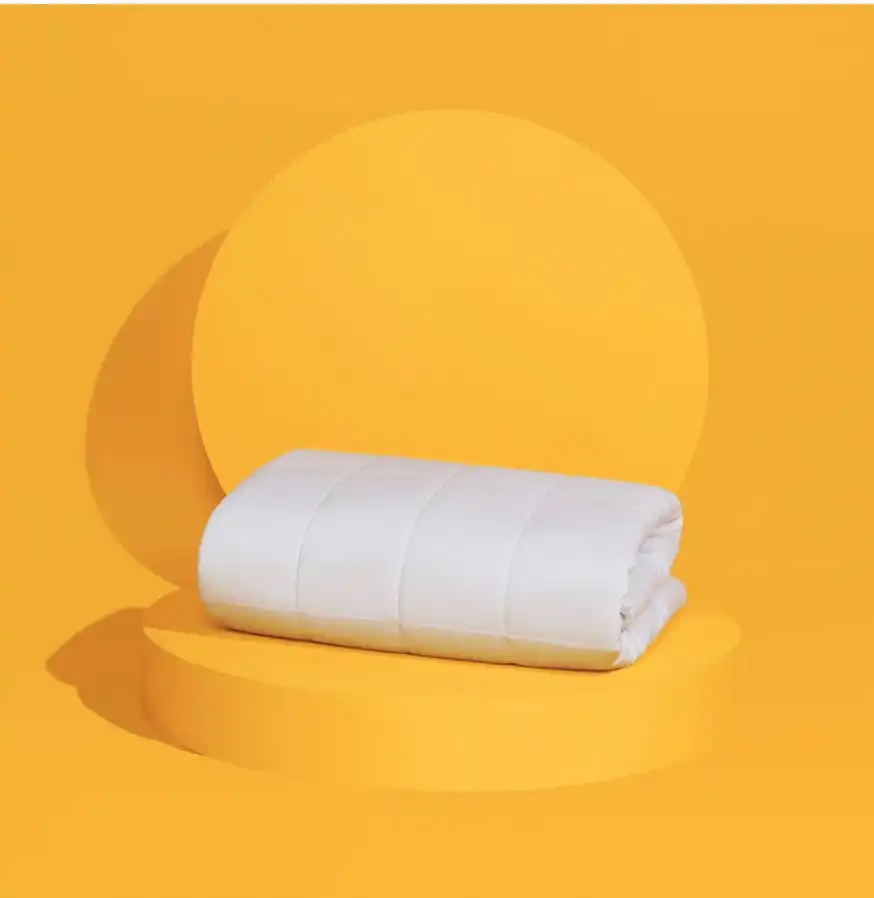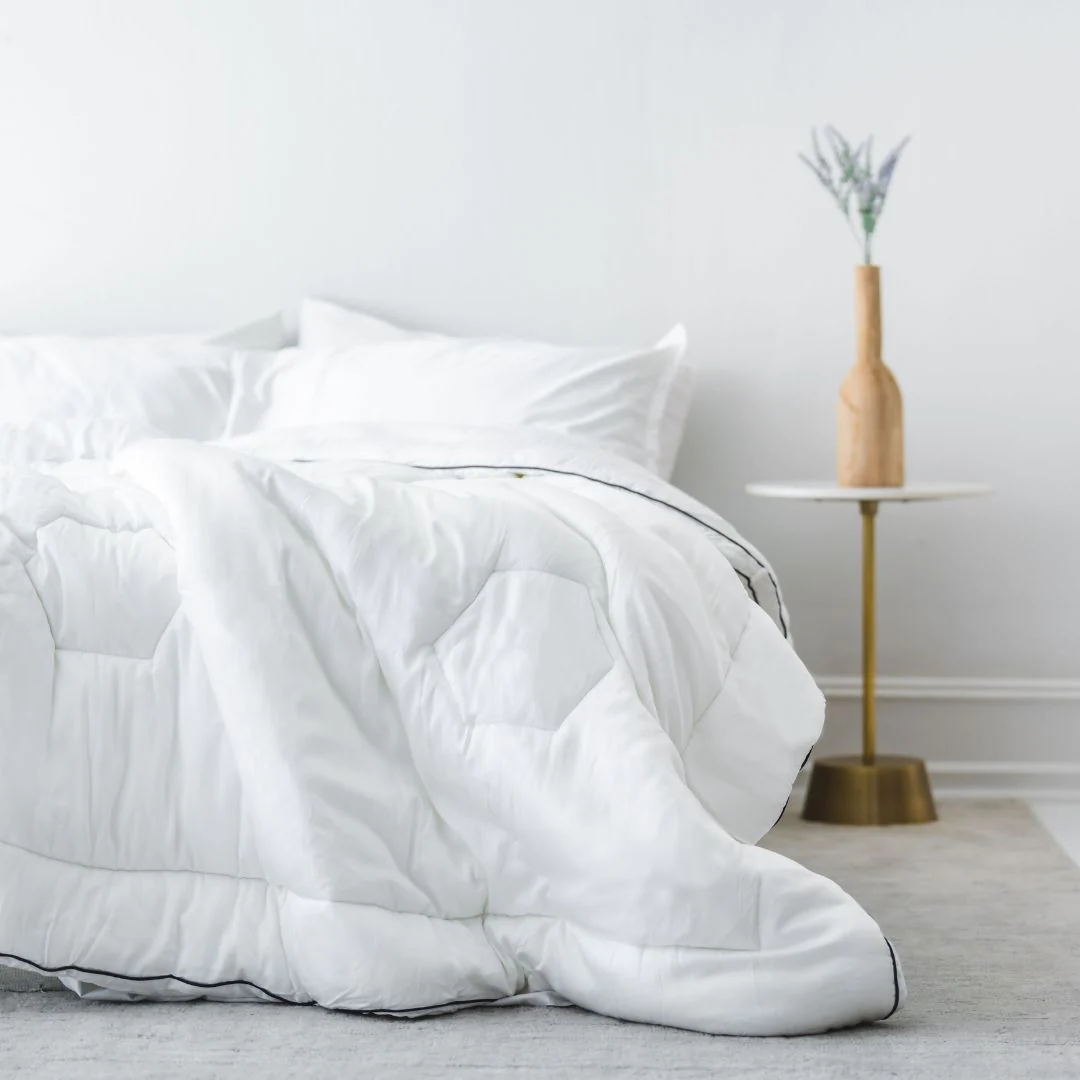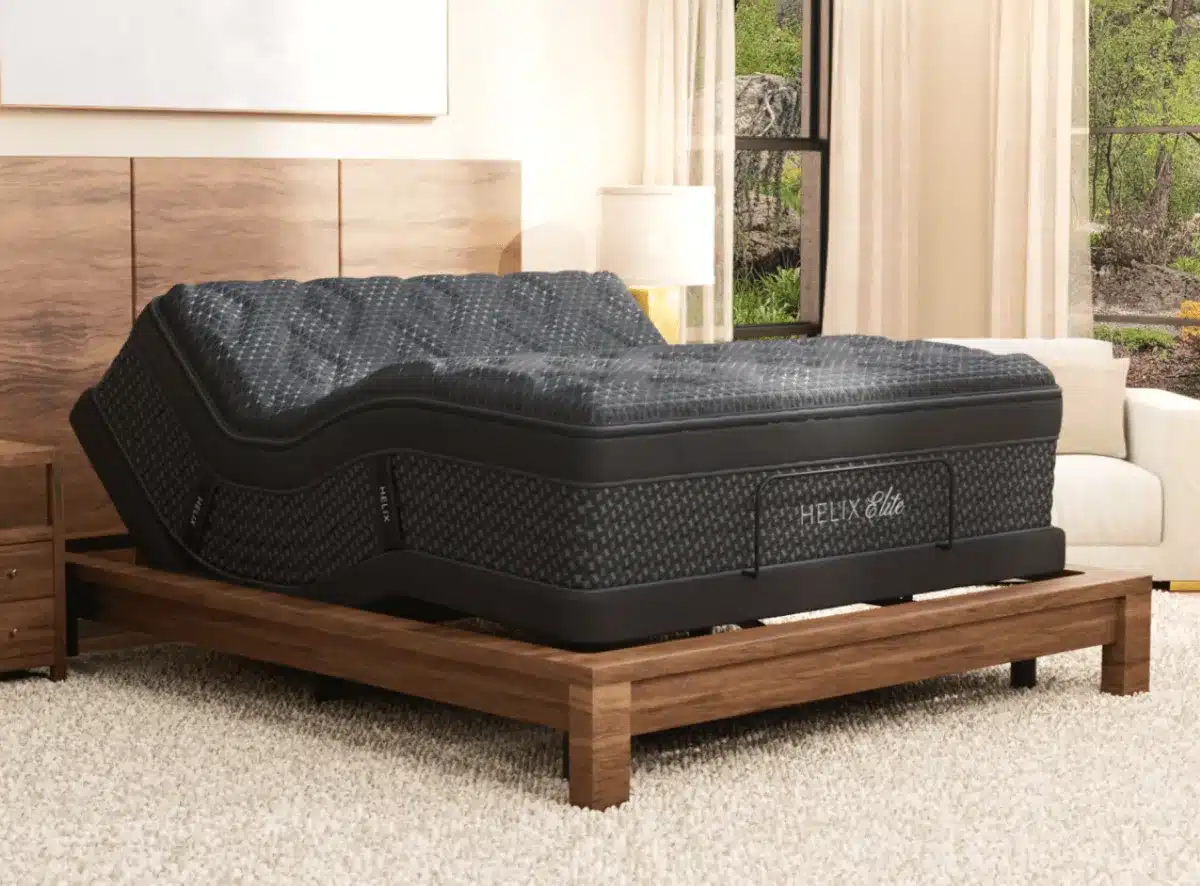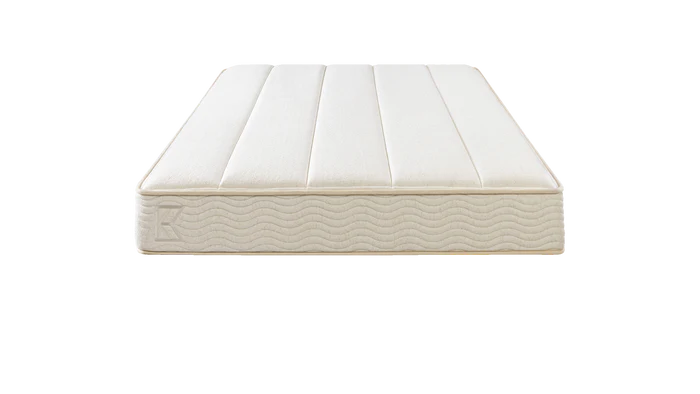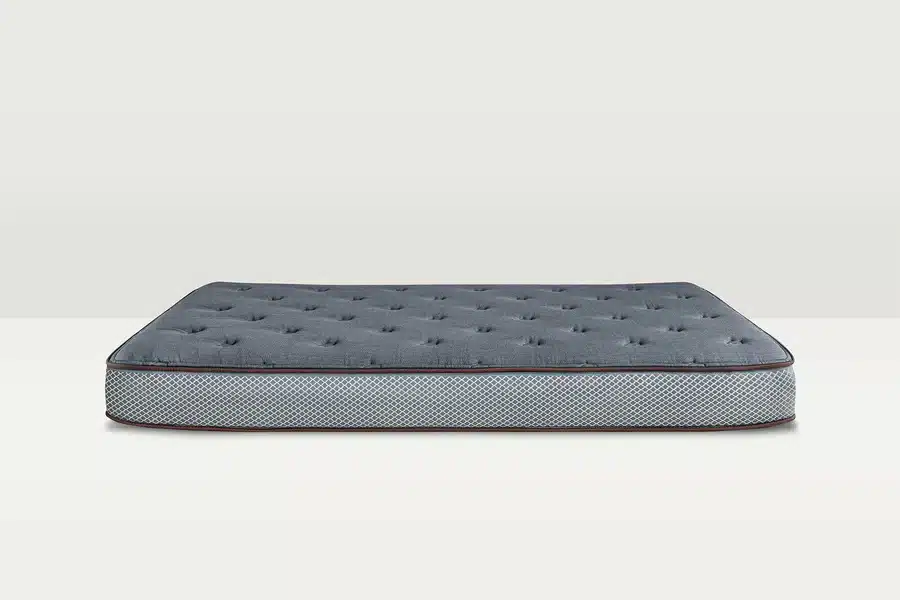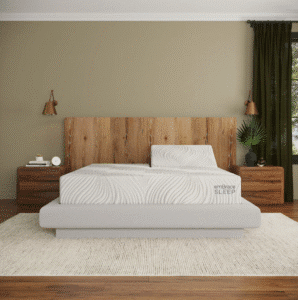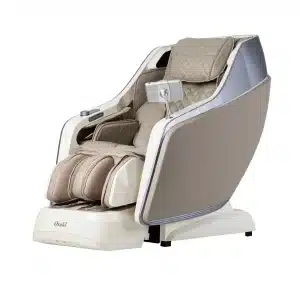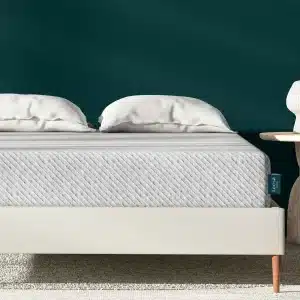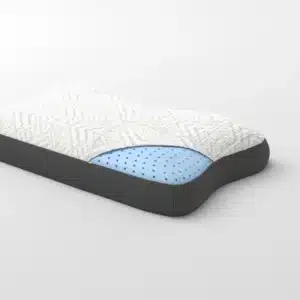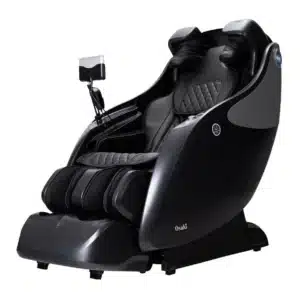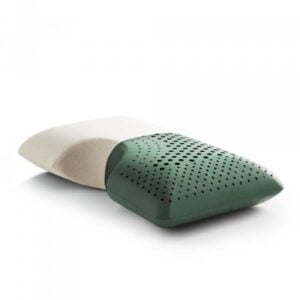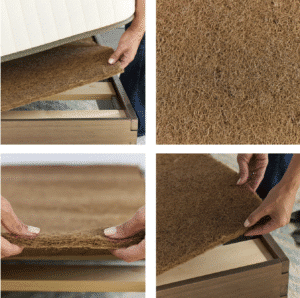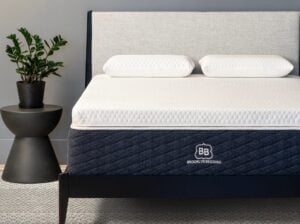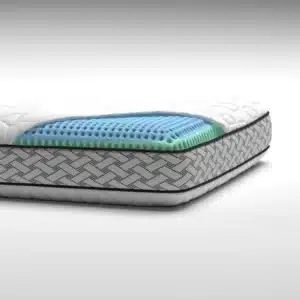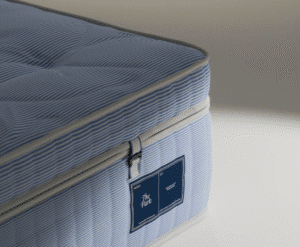A comforter, also known as a duvet, is a type of bedding that is used to keep you warm and cozy during the cold winter nights. It is a thick, quilted blanket that is filled with synthetic or natural materials such as feathers, down, wool, or cotton. Comforters come in different sizes, styles, and colors, making it easy to find one that fits your personal taste and home decor.
Types of Duvet Inserts / Comforters:
There are several types of comforters available on the market, and each type is designed to meet different needs. Here are some of the most common types of comforters:
Down Comforters – Down comforters are made from the soft under feathers of geese or ducks. They are known for their warmth, lightness, and softness. Down comforters are available in different fill powers, which refer to the amount of down per ounce of filling. The higher the fill power, the warmer and fluffier the comforter will be.
Synthetic Comforters – Synthetic comforters are made from polyester or other synthetic fibers. They are a great alternative to down comforters for those who are allergic to down or prefer not to use animal products. Synthetic comforters are also hypoallergenic and easy to care for.
Wool Comforters – Wool comforters are made from the wool of sheep or other animals. They are known for their ability to regulate body temperature, making them ideal for use in all seasons. Wool comforters are also hypoallergenic and naturally flame-resistant.
Cotton Comforters – Cotton comforters are made from 100% cotton and are known for their softness and breathability. They are a great choice for those who live in warmer climates or prefer a lightweight comforter.
Materials Used to Fill Comforters:
The materials used to fill comforters can affect their warmth, weight, and overall feel. Here are some of the most common materials used to fill comforters:
Down – Down is a popular filling material for comforters because it is warm, lightweight, and soft. It is also a natural insulator that traps heat to keep you warm.
Synthetic fibers – Synthetic fibers such as polyester are often used as a filling material in comforters. They are a great alternative to down for those who are allergic to it or prefer not to use animal products.
Wool – Wool is a natural fiber that is often used in comforters. It is warm, breathable, and naturally flame-resistant.
Cotton – Cotton is a popular filling material for lightweight comforters. It is soft, breathable, and easy to care for.
How to Choose the Right Comforter:
Choosing the right comforter can be a daunting task, but there are a few things to keep in mind to help you make the best choice. Here are some factors to consider:
Warmth – Consider the warmth you need from your comforter. If you live in a colder climate, you may need a warmer comforter with a higher fill power. If you live in a warmer climate, a lightweight comforter made from cotton may be more suitable.
Size – Consider the size of your bed when choosing a comforter. Make sure you choose a comforter that fits your bed properly to ensure maximum warmth and comfort.
Fill material – Consider the fill material that best meets your needs. If you are allergic to down, choose a synthetic or wool comforter instead.
Price – Comforters are available at different price points, so consider your budget when choosing a comforter. While high-quality down comforters can be expensive, synthetic and wool comforters are often more affordable.
- Care – Consider the care required for the comforter. Down comforters may require professional cleaning, while synthetic and wool comforters can be machine-washed at home.
Best Down Duvet Inserts
|
||
|
||
|
||
|
||
|
Best Down Alternative Duvet Inserts / Comforters
|
Best Down Alternative Comforter
|
||
|
Best for Hot Sleepers 2024
|
||
|
Best for Hot Sleepers
|
||
Best Silk Duvet Inserts / Comforters
|
Best Silk Duvet
|
||
A comforter, also known as a duvet, is a type of bedding that is used to keep you warm and cozy during the cold winter nights. It is a thick, quilted blanket that is filled with synthetic or natural materials such as feathers, down, wool, or cotton. Comforters come in different sizes, styles, and colors, making it easy to find one that fits your personal taste and home decor.
Types of Duvet Inserts / Comforters:
There are several types of comforters available on the market, and each type is designed to meet different needs. Here are some of the most common types of comforters:
Down Comforters – Down comforters are made from the soft under feathers of geese or ducks. They are known for their warmth, lightness, and softness. Down comforters are available in different fill powers, which refer to the amount of down per ounce of filling. The higher the fill power, the warmer and fluffier the comforter will be.
Synthetic Comforters – Synthetic comforters are made from polyester or other synthetic fibers. They are a great alternative to down comforters for those who are allergic to down or prefer not to use animal products. Synthetic comforters are also hypoallergenic and easy to care for.
Wool Comforters – Wool comforters are made from the wool of sheep or other animals. They are known for their ability to regulate body temperature, making them ideal for use in all seasons. Wool comforters are also hypoallergenic and naturally flame-resistant.
Cotton Comforters – Cotton comforters are made from 100% cotton and are known for their softness and breathability. They are a great choice for those who live in warmer climates or prefer a lightweight comforter.
Materials Used to Fill Comforters:
The materials used to fill comforters can affect their warmth, weight, and overall feel. Here are some of the most common materials used to fill comforters:
Down – Down is a popular filling material for comforters because it is warm, lightweight, and soft. It is also a natural insulator that traps heat to keep you warm.
Synthetic fibers – Synthetic fibers such as polyester are often used as a filling material in comforters. They are a great alternative to down for those who are allergic to it or prefer not to use animal products.
Wool – Wool is a natural fiber that is often used in comforters. It is warm, breathable, and naturally flame-resistant.
Cotton – Cotton is a popular filling material for lightweight comforters. It is soft, breathable, and easy to care for.
How to Choose the Right Comforter:
Choosing the right comforter can be a daunting task, but there are a few things to keep in mind to help you make the best choice. Here are some factors to consider:
Warmth – Consider the warmth you need from your comforter. If you live in a colder climate, you may need a warmer comforter with a higher fill power. If you live in a warmer climate, a lightweight comforter made from cotton may be more suitable.
Size – Consider the size of your bed when choosing a comforter. Make sure you choose a comforter that fits your bed properly to ensure maximum warmth and comfort.
Fill material – Consider the fill material that best meets your needs. If you are allergic to down, choose a synthetic or wool comforter instead.
Price – Comforters are available at different price points, so consider your budget when choosing a comforter. While high-quality down comforters can be expensive, synthetic and wool comforters are often more affordable.
- Care – Consider the care required for the comforter. Down comforters may require professional cleaning, while synthetic and wool comforters can be machine-washed at home.
Best Down Duvet Inserts
|
||
|
||
|
||
|
||
|
Best Down Alternative Duvet Inserts / Comforters
|
Best Down Alternative Comforter
|
||
|
Best for Hot Sleepers 2024
|
||
|
Best for Hot Sleepers
|
||
Best Silk Duvet Inserts / Comforters
|
Best Silk Duvet
|
||
How to Take Care of Your Comforter:
To ensure that your comforter lasts for many years, it is important to take proper care of it. Here are some tips on how to care for your comforter:
Follow the care instructions – Always follow the care instructions provided with your comforter. Different materials and constructions may require different care.
Use a duvet cover – Using a duvet cover can help protect your comforter from stains and wear and tear. Duvet covers are also easy to wash and can be changed to match your home decor.
Wash it regularly – It is important to wash your comforter regularly to keep it clean and fresh. Synthetic and wool comforters can be washed in a large capacity washing machine, while down comforters may need to be taken to a professional cleaner.
Store it properly – When not in use, store your comforter in a breathable bag or container to protect it from dust and moisture. Avoid storing it in a plastic bag as this can trap moisture and cause mold or mildew to form.
Fluff it up – Down comforters may need to be fluffed up after washing or storing to maintain their loft and warmth. Simply shake or fluff the comforter to redistribute the filling evenly.
Comforters are an essential part of any comfortable and cozy bedroom. Whether you prefer a warm down comforter, a lightweight cotton comforter, or a hypoallergenic synthetic or wool comforter, there are many options available to meet your needs. By choosing the right comforter and taking proper care of it, you can enjoy a comfortable and restful night’s sleep for years to come.
How to Take Care of Your Comforter:
To ensure that your comforter lasts for many years, it is important to take proper care of it. Here are some tips on how to care for your comforter:
Follow the care instructions – Always follow the care instructions provided with your comforter. Different materials and constructions may require different care.
Use a duvet cover – Using a duvet cover can help protect your comforter from stains and wear and tear. Duvet covers are also easy to wash and can be changed to match your home decor.
Wash it regularly – It is important to wash your comforter regularly to keep it clean and fresh. Synthetic and wool comforters can be washed in a large capacity washing machine, while down comforters may need to be taken to a professional cleaner.
Store it properly – When not in use, store your comforter in a breathable bag or container to protect it from dust and moisture. Avoid storing it in a plastic bag as this can trap moisture and cause mold or mildew to form.
Fluff it up – Down comforters may need to be fluffed up after washing or storing to maintain their loft and warmth. Simply shake or fluff the comforter to redistribute the filling evenly.
Comforters are an essential part of any comfortable and cozy bedroom. Whether you prefer a warm down comforter, a lightweight cotton comforter, or a hypoallergenic synthetic or wool comforter, there are many options available to meet your needs. By choosing the right comforter and taking proper care of it, you can enjoy a comfortable and restful night’s sleep for years to come.











